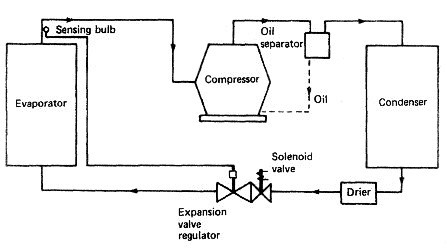
Refrigeration of cargo spaces and storerooms
Refrigeration is a process in which the temperature of a space or its
contents is reduced to below that of their surroundings. Refrigeration is used in the carriage of some liquefied gases and bulk chemicals
, in air conditioning systems, to cool bulk CO2 for fire
fighting systems and to preserve perishable foodstuffs during transport of foodstuff .


